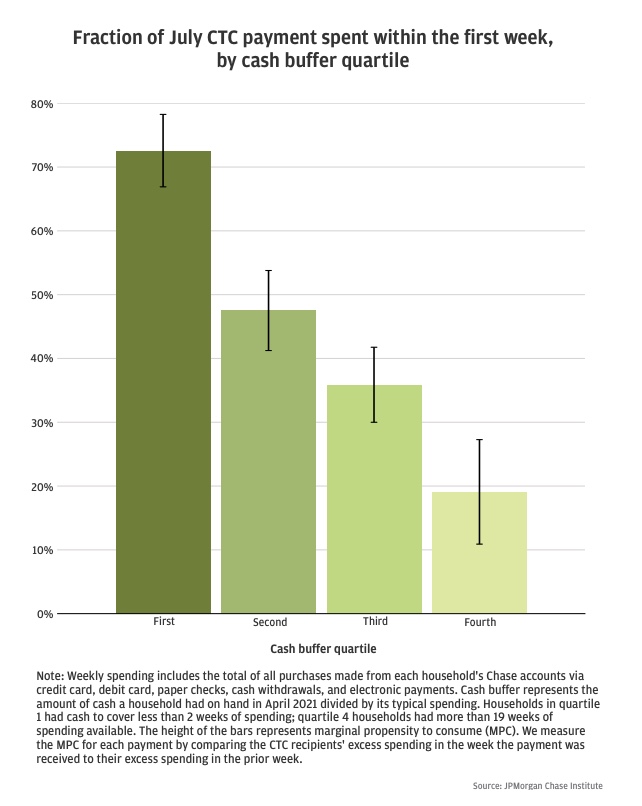UnidosUS Lauds Enhanced Child Tax Credit as a Win for Families and Kids: One in Every Three Latino Children Would Benefit
Washington, DC— A newly announced bi-partisan tax deal negotiated by Sen. Ron Wyden (D-OR) and Rep. Jason Smith (R-MO) would ensure that tax breaks given to major companies will be accompanied by additional benefits for children with an enhanced Child Tax Credit (CTC) focused on the lowest-income households.
While the deal falls short of reinstating the full expansion for the CTC from the American Rescue Plan Act, which lifted millions of children out of poverty, the changes are estimated to lift 500,000 children out of poverty over the life of the credit and lessen serious economic hardship for 5 million more kids.
The new tax proposal would ensure that more families qualify for the full credit and particularly benefit families with multiple children, which include many Latino households. It would also phase in a more generous credit to reflect inflation in household costs and allow families to choose among the prior two tax years to qualify, creating welcome flexibility for income fluctuations in family budgets. The Center on Budget and Policy Priorities estimates that one in every three Latino children would benefit from the credit.
The deal will apply to the next three tax years while Congress develops a comprehensive tax reform package in 2025. Future reforms should reflect the reductions in child poverty that are possible from a refundable and expanded CTC and include children with Individual Tax Identification Numbers (ITINs), as well as measures to ensure tax equity for Puerto Rico. Without including children with ITINs and Puerto Rican families, we simply cannot achieve our important goal of reducing child poverty by sixty percent.
“We now know that policy makers can dramatically reduce child poverty with the political will to do so, and that the rising cost of living is the most important issue for Latino voters. This new deal represents a down payment for working families and is a win-win for both children and business,” said Laura MacCleery, Senior Director, Policy and Advocacy, at UnidosUS. “At the same time, we look forward working on comprehensive tax reform in Congress over the next few years as the key opportunity to double down on our national commitment to end child poverty.”
##
Fact Sheet
An Expanded Child Tax Credit (CTC) is a Win-Win for Business, Retailers and Working Families
- The expanded CTC made dramatic progress reducing child poverty, helping households pay for groceries and food as the largest category. It also helped pay for the childcare that people need to go to work.
- The expanded CTC worked, but its benefits ended: The child poverty rate in 2021 was significantly reduced from previous years due to the policies and funding provided by Covid-era programs, especially the CTC. However, after it expired, the number of children in poverty increased from 3.8 million in 2021 to 9 million in 2022.
- The most common reported uses of payments were for basic needs, including food (65%), utilities and telecommunications (40%), rent and mortgage (39%) and clothing (34%). Use of CTC payments on these necessities generally increased over the six months, but purchases for food jumped substantially, from 48% to 65%. Use of CTC payments for food rose in nearly every state. Graph source (2/2022, The Annie E. Casey Foundation):

- Based on a 2022 analysis by JP Morgan Chase and Co, the lowest income households spent most of the money right away—often in the first week after receiving it. The lowest earners (take-home income under $31,000) in this group spent a substantial share—80 percent—of July advanced CTC payments within the first week. The highest earners (take-home incomes greater than $73,000) still spent nearly 30 percent within a week.

- These effects were likely attenuated by the fact that many families had already received some pandemic-era stimulus: JPMC’s analysis notes: “Given the sensitivity of the consumption response to cash liquidity, it is possible that families would spend an even higher share of future payments in the context of household liquidity closer to historical levels.”
- The payments also put nearly $20 billion into local economies each month, raising family incomes by $444. The Joint Committee on Taxation estimated an economic multiplier effect of 1.25 — for every 1 dollar of CTC, the local economy is boosted by 1.25 dollars. A 2021 Niskanen Center model estimated that:
Across the next 12 months, we estimate that the CTC expansion will boost consumer spending by $27 billion, generate $1.9 billion in revenues from state and local sales taxes and support over 500,000 thousand full time jobs at the median wage… In particular, rural regions stand to benefit from a substantial injection of relative purchasing power equivalent to 1.35% of non-metro GDP. [Emphasis added.]
- Monthly Child Tax Credit payments made it easier for recipients to work. The monthly Child Tax Credit payments caused no drop in employment and, in fact, made it easier for more low-income parents to work and gain job skills.
- In fact, parents eligible for the CTC were much less likely to report being unemployed due to childcare responsibilities after monthly CTC payments began.
- People who were eligible for the CTC were 1.3 times more likely to start new professional training.
- Many families reported using CTC payments for childcare, reducing a large barrier to employment.
- In a national survey, one-quarter of respondents reported that the monthly payments made it easier for them to engage in paid work or work more hours.